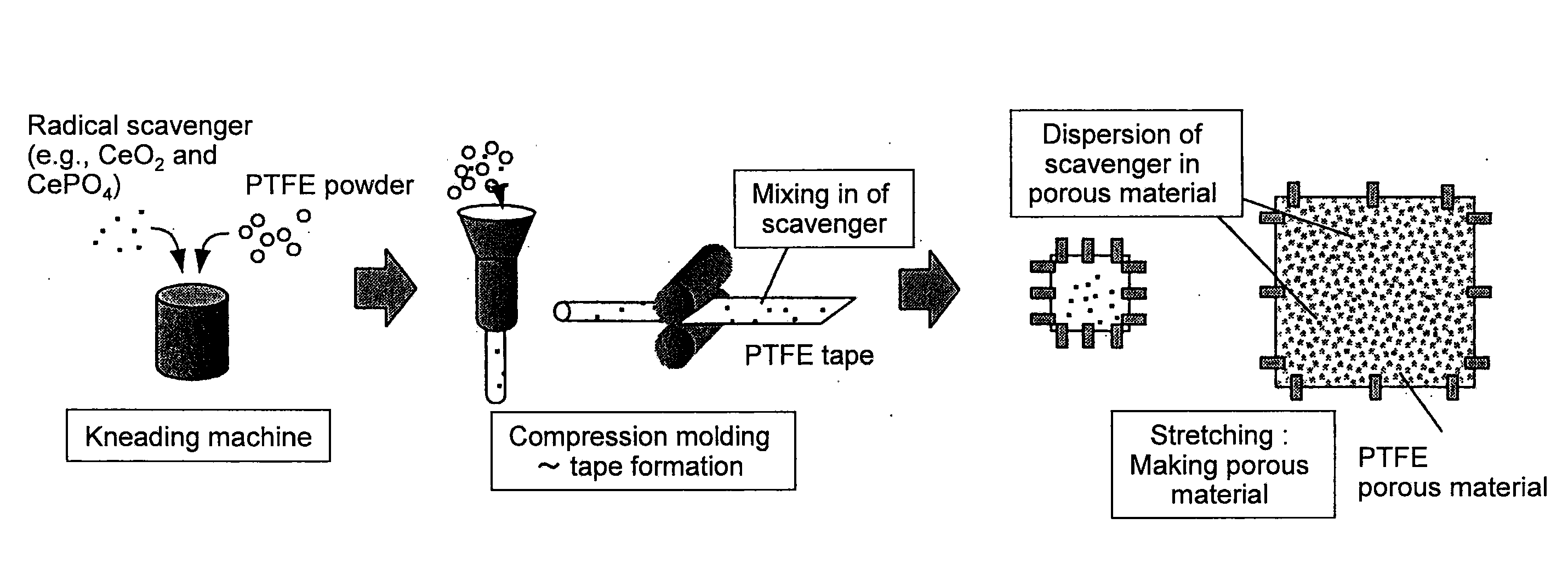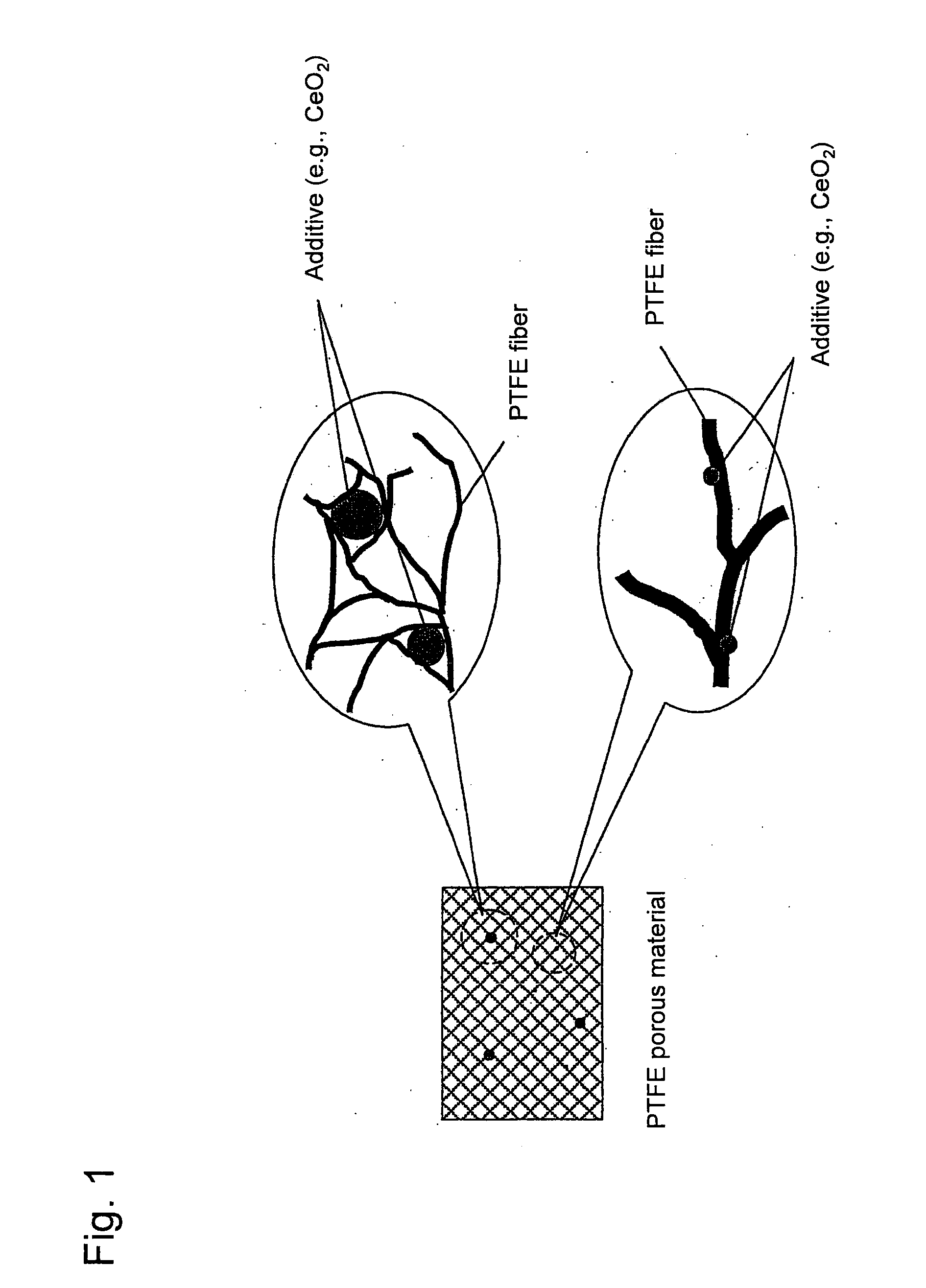Reinforced electrolyte membrane for fuel cell, method for producing the membrane, membrane-electrode assembly for fuel cell, and polymer electrolyte fuel cell comprising the assembly
a fuel cell and electrolyte technology, applied in the direction of application, sustainable manufacturing/processing, final product manufacturing, etc., can solve the problems of easy short circuit between the electrodes, the fluoride-based and hydrocarbon-based electrolyte membrane used for polymer electrolyte fuel cells becomes thinner, and the solid polymer electrolyte membrane with too thin a membrane is problematic, etc., to achieve good mechanical strength, improve chemical durability, and high dispersion of radicals
- Summary
- Abstract
- Description
- Claims
- Application Information
AI Technical Summary
Benefits of technology
Problems solved by technology
Method used
Image
Examples
example 1
[0033]PTFE powders were mixed with 5 wt % CePO4 powders (mean particle size: 1 μm). After the steps of molding tape formation stretching, a PTFE porous material containing CePO4 was produced. Nafion solution DE2020 (trade name, DuPont) was casted on the PTFE porous material, so that an electrolyte membrane containing a reinforcement layer was produced (referred to as electrolyte A).
[0034]A catalyst layer was transferred to the electrolyte A, carbon paper was used as a diffusion layer, and then MEA was produced (referred to as MEA (A)).
example 2
[0035]PTFE powders were mixed with 5 wt % CePO4 powders (mean particle size: 0.1 μm). After the steps of molding tape formation stretching, a PTFE porous material containing CePO4 was produced. Nafion solution DE2020 (trade name, DuPont) was casted on the PTFE porous material, so that an electrolyte membrane containing a reinforcement layer was produced (referred to as electrolyte B).
[0036]A catalyst layer was transferred to the electrolyte A, carbon paper was used as a diffusion layer, and then MEA was produced (referred to as MEA (B)).
PUM
| Property | Measurement | Unit |
|---|---|---|
| particle size | aaaaa | aaaaa |
| particle size | aaaaa | aaaaa |
| hardness | aaaaa | aaaaa |
Abstract
Description
Claims
Application Information
 Login to View More
Login to View More - R&D
- Intellectual Property
- Life Sciences
- Materials
- Tech Scout
- Unparalleled Data Quality
- Higher Quality Content
- 60% Fewer Hallucinations
Browse by: Latest US Patents, China's latest patents, Technical Efficacy Thesaurus, Application Domain, Technology Topic, Popular Technical Reports.
© 2025 PatSnap. All rights reserved.Legal|Privacy policy|Modern Slavery Act Transparency Statement|Sitemap|About US| Contact US: help@patsnap.com



